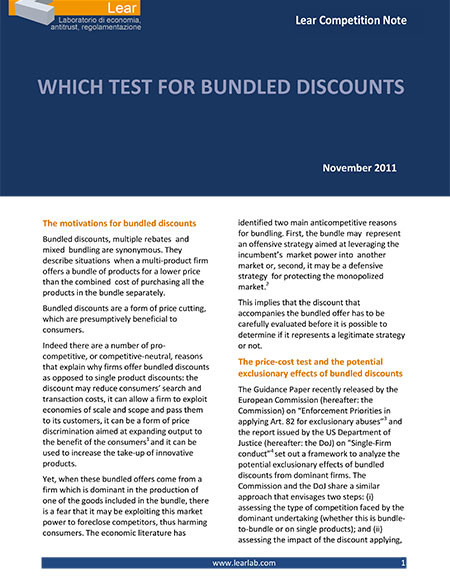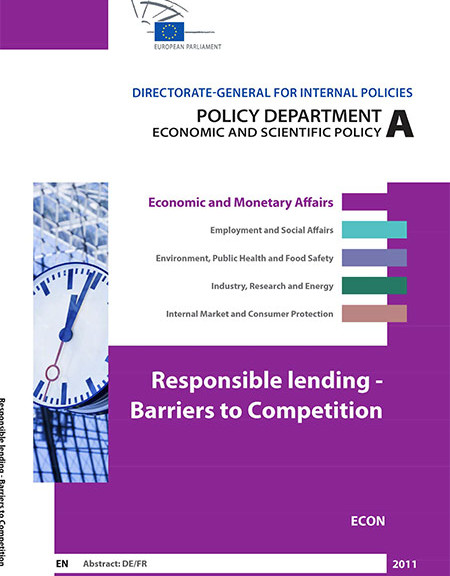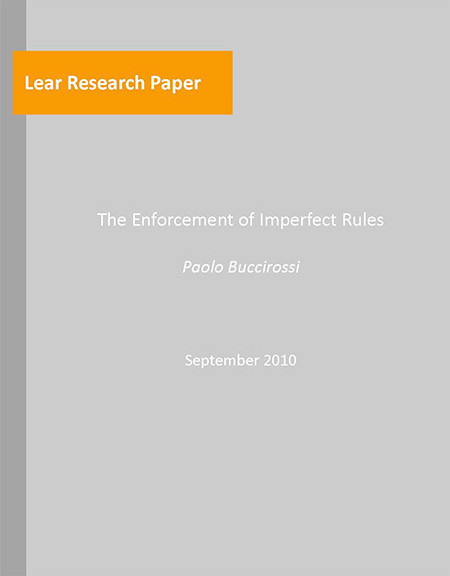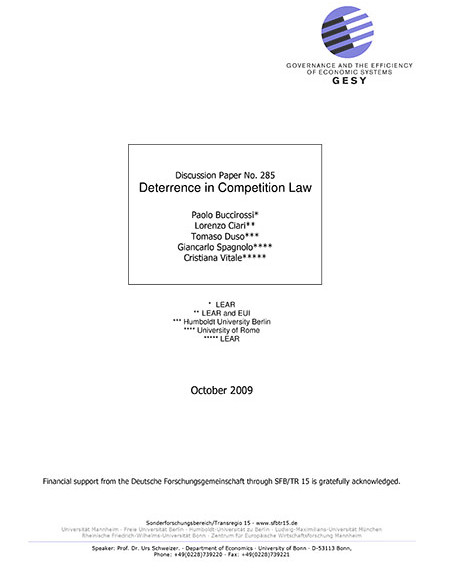Il 31 ottobre 2014 l’Autorità Garante della Concorrenza e del Mercato (AGCM) ha pubblicato le Linee Guida sulla modalità di determinazione delle sanzioni pecuniarie irrogate nel caso di violazioni di norme concorrenziali. La presente nota descrive alcuni elementi di novità e illustra come le Linee Guida suggeriscono un più ampio ruolo dell’analisi economica, anche ai fini della quantificazione dell’importo delle sanzioni.
Archives
Which test for bundled discounts
Bundled discounts are a form of price cutting which are presumptively beneficial to consumers. However, bundle offers from a dominant firm might exploit market power to foreclose competitors, thus harming consumers. The European Commission and the DoJ set out a framework to analyze the potential exclusionary effects of bundled discounts by dominant firms. Focusing on the implementation of the price-cost test, this note discusses two issues that neither the DoJ nor the Commission have addressed so far. Namely, the evaluation of the nature of competition in the relevant markets and the rule to allocate the discount across the products when bundle-to-bundle competition is not possible.
Responsible Lending – Barriers to Competition
This study analyses the main barriers to effective competition in the provision of mortgage credit. The study considers and discusses barriers affecting both the supply (distance, information sharing, cross-selling practices, linkages between mortgage lenders and other market players) and the demand (switching and search costs) side of the market. Based on the available evidence it provides an assessment of the extent to which such barriers restrict competition in the mortgage market.
Study commissioned by the European Parliament
The Enforcement of Imperfect Rules
This paper examines the optimal sanction for rules that are imperfect in that they are either overinclusive, as they prohibit an action that in some circumstances is beneficial, or underinclusive as they allow agents to undertake alternative conducts that are harmful, or both. The paper clarifies why this notion of imperfection divers from the notion of over- and underdeterrence and from that of legal errors. Finally it shows that when rules are imperfect the optimal sanction is lower than the optimal sanction for a perfect rule, both if the rule is overinclusive and if it is underinclusive.
Deterrence in Competition Law
This paper provides a comprehensive discussion of the deterrence properties of a competition policy regime. On the basis of the economic theory of law enforcement we identify several factors that are likely to affect its degree of deterrence: 1) sanctions and damages; 2) financial and human resources; 3) powers during the investigation; 4) quality of the law; 5) separation of power. We then discuss how to measure deterrence. We review independence and 6) the literature that uses surveys to solicit direct information on changes in the behavior of firms due to the threats posed by the enforcement of antitrust rules, and the literature based on the analysis of hard data. We finally argue that the most challenging task, both theoretically and empirically, is how to distinguish between “good” deterrence and “bad” deterrence.
Gesy- Discussion Paper n.285
So Far, so Close: Competition Analysis of Backbone and Local Access for Broadband Internet
This report presents a competitive assessment of the Internet infrastructure across Europe. The analysis ranges from the upstream global market for the provision of universal Internet connectivity to the downstream national markets for the provision of local network access.
So Soft, so Hard: Competition Issues in the Provision of Content and E-commerce Services
This report deals with the provision of content and other applications to Internet users. The first part is focused on information/entertainment content applications. The second one addresses the issue of e-commerce.
A Search Model Where Consumers Choose Quantity Based on Expected Price
I describe a price game in which consumers face search costs and base their quantity decision on the expected price. Because of search costs, the choice of the firm they will buy from is described by a random process. I show that the expected equilibrium price is above the monopoly price. This result does not change if demand comes from a small share of perfectly informed consumers with zero search costs.
Published in The Journal of Industrial Economics, December 2003, Vol. LI, n. 4, pp. 427-32.
Access to an Essential Facility: Efficient Component Pricing Rule or Unrestricted Private Property Rights
In this paper we compare the access to an essential facility in two different property rights regimes. In one of them, the owner of the facility has a full private property right. In the other, access is regulated according to the efficient component pricing rule. Proponents of the second regime claim that this rule is efficient, for it forecloses the complementary market only to inefficient producers. We prove that the two legal frameworks are equivalent if we do not consider the possibility of the transfer of the property right and that if this is allowed the efficient component pricing rule might exclude efficient suppliers.








